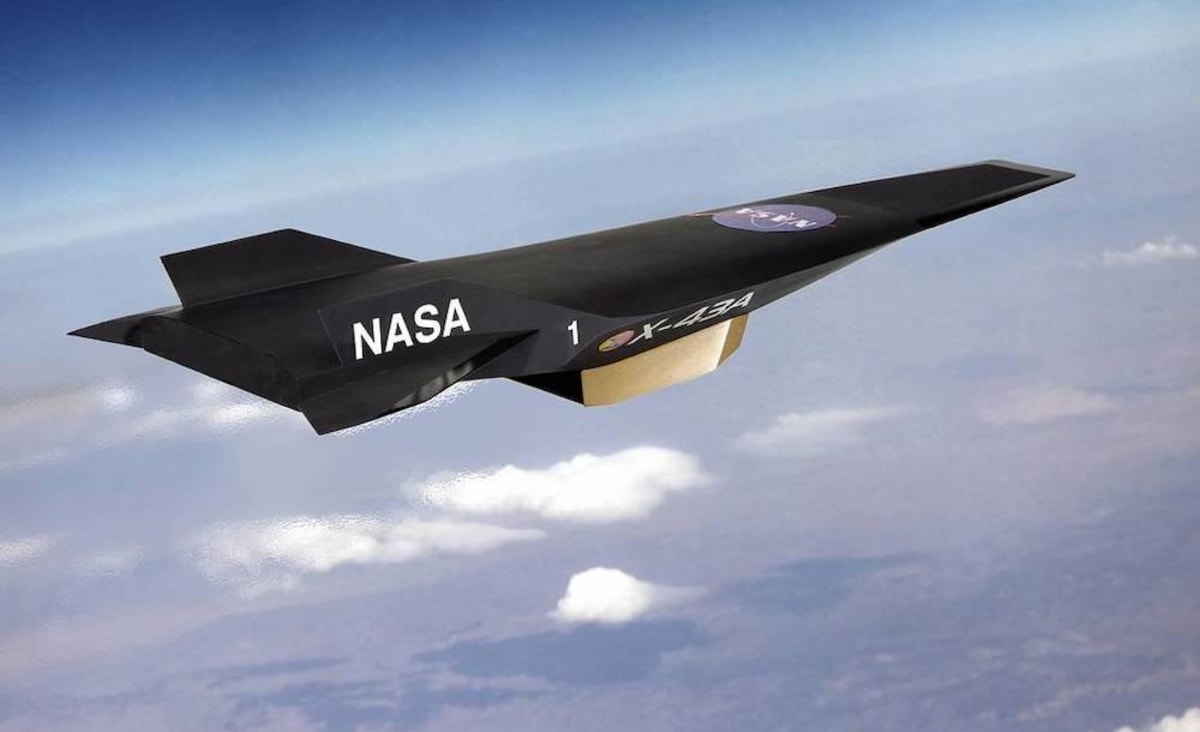
www.yahoo.com
Building an interstellar ramjet might be possible, but insanely difficult
In traditional aircraft or rockets, fuel is burned continuously in order to generate thrust. As speed increases, approaching the speed of sound, air in front of the craft compresses until it creates a shockwave which we hear on the ground as a sonic boom. More powerful jet engines are able to push through the shockwave gaining higher speeds, but there is a limit. At some point the disruption of the shockwave meets the thrust of the engine and you hit a wall. To go even faster, you need a better
Science & Tech
In traditional aircraft or rockets, fuel is burned continuously in order to generate thrust. As speed increases, approaching the speed of sound, air in front of the craft compresses until it creates a shockwave which we hear on the ground as a sonic boom. More powerful jet engines are able to push through the shockwave gaining higher speeds, but there is a limit. At some point the disruption of the shockwave meets the thrust of the engine and you hit a wall. To go even faster, you need a better engine.
Ramjets work by taking advantage of the shockwaves created at supersonic speeds. Specially built intakes at the front of the craft funnel the high pressure and compress it even further. The compressed air flows into a combustion chamber where it’s mixed with fuel and ejected out the back at supersonic speeds, creating additional thrust. Ramjets by definition can’t achieve thrust at subsonic speeds and instead need more traditional methods to get going. Once they’re up and moving, however, they’re highly efficient and capable of gaining speeds in excess of Mach 9 (7,000 miles per hour).
That’s all well and good if you’re inside the Earth’s atmosphere and have plenty of air to play with, but scientists and engineers wondered if you could use a similar process to power spacecraft in order to achieve relativistic speeds.
Ships in space can’t gather air from the vacuum but there are other materials which could be gathered and used for thrust. A paper published by Robert W. Bussard in 1960 proposed an interstellar ramjet later made famous by its use in Poul Anderson’s 1970 novel Tau Zero.
Instead of gathering air to generate thrust, the Bussard ramjet would scoop up and compress ionized hydrogen from the near vacuum of space using electric or magnetic fields and use them for fuel. As the craft moves faster, the flow of protons into the engine would also increase, producing even more thrust. The whole process becomes almost self-sustaining, allowing such a craft to go spectacularly fast.
Two years before Tau Zero, in 1968, John F. Fishback published a paper building on Bussard’s initial idea, proposing a magnetic scoop which might work to power an interstellar ramjet. While ramjets have made incredible progress within the confines of our atmosphere, relatively little attention has been paid to the development of similar space-based engines since Fishback’s paper, until now.
A new paper by Peter Schattschneider from the Vienna University of Technology and Albert Jackson from Triton Systems, published in the journal Acta Astronautica takes a hard look at the work of Bussard and Fishback in hopes of finally determining if an interstellar ramjet engine could realistically be built. Their findings, sadly, suggest that while physics allows for their creation, they would require technology well beyond human capability.
Because the distribution of ionized hydrogen in space is low — on the order of one atom per cubic centimeter — gathering enough to fuel a fusion reactor would require magnetic coils which the authors called “absurdly long.” Given realistic values, they estimated the coils would need a radius of approximately 2,000 kilometers.
Moreover, as thrust increases, the strain on the magnetic coils needed to focus the protons into the reactor also increases until they reach a breaking point. Despite operating in a near vacuum, the result of the strain means that acceleration cannot continue beyond this point. Additionally, the upper limit of the engine’s acceleration is constrained by the chosen support material for the coils. Things become further complicated when we take into account the additional mass needed to support the magnetic coils as well as the mass of the coils themselves. Each bit of mass necessarily reduces the acceleration we’re able to gain.
Ultimately, the new paper found that prior estimates for interstellar ramjets were far too optimistic, limiting the acceleration and possible ship time to three years at a distance of about 10 light years. That is, of course, an incredible improvement over current technologies but effectively erases the dream that such a craft could travel to the galactic center in a human lifetime.
Not only is this technology beyond our current reach, Schattschneider and Jackson concluded that the engineering capability needed to construct a working interstellar ramjet exceeds even that of a Kardashev Level II civilization.
Interstellar ramjets may very well be in our future, but it’s a very distant future at best.
























































